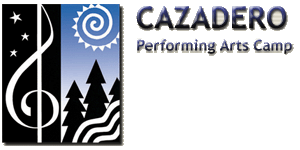Lesson Plan 32
Redwood Trees: How Old?
First posted May 6, 2004 Last
updated July 5, 2004
This Lesson Plan shows
how to estimate
the age of a redwood tree
( Grade Level 9-12)

Remember these points from the Lesson Plan
Homepage:
(1) These lesson plans are not rigid requirements,
but a starting point for the Nature Counselor's
plan for teaching a particular day's experience.
(2) The activity should be fun and emphasize
active learning on the student's part: ask a
question, don't just state a fact.
(3) You should employ hands-on as much as possible.
(4) Plan each session to also allow time for
making entries in the Nature
Journal. |
Prior to the
session
(1) Review this section and the section on the Redwood
Forest and the age of redwood
trees.
(2) Think about time and our experience of it. Time
is a hard concept for younger students to understand
and appreciate. Things that occurred in history prior
to their birth do not mean much. Be aware of this as
you try to teach them about the age of the redwoods.
They evolved along with the dinosaurs and were alive
before the US was created!
(3) Be sure to have the yardstick, string, and either
the sample redwood section or a saw, sandpaper, and
branch.
(4) Scout out the log sections at the campfire, select
some that will be good on which to count annular rings.
Session
(1) Start with walking around camp, observing the height
of the various trees that we have. Identify the species.
*What species of trees are at Cazadero? How can you
identify them? Leaves, bark, size, shape?
*Rank the tree species in terms of overall size. Does
size always correlate with age?
* Talk about the ages of things, such as the students'
ages, their parents' ages, grandparents'; the age
of Cazadero, what was going on 100 years ago, 200
years ago, 1000 years ago. A timeline in their Journals
may help to explain age in a graphic way.
(2) Redwoods are obviously old.
* How old would you guess a plant or tree is? (Flowers
often annual, oaks to about 300 years, redwoods to
2000 years).
(3) It might be fun to know how old our oldest tree
is.
* How could you measure the age of the oldest tree?
How you could make a rough guess? Each student should
independently estimate the age and write their answer
in their Journal.
* Discuss the estimates. Do you want to change yours?
Why?
(4) Walk to the campfire, examine a log section. Discuss
annular rings (students usually grasp this quickly).
* Can you now make a better guess as to the age
of the redwoods? (Count the annular rings in the log
sections at the campfire. Remember, these are usually
pines, which are faster growing than redwoods.) Each
student should write their answer in their Journal.
* Discuss this second estimate. Do you want to change
yours? Why?
* How can you measure it more accurately? The tools
you have are a piece of string, a yardstick, a saw
(too small to cut down the tree), and a branch of
the redwood tree.
(4) Divide the students into groups of about three
or four. Each group should independently try this step.
Solution: the branch probably grows at the same
approximate rate as the tree. Cut the branch, count
the rings, measure the diameter of the branch.
(5) Now all you need is to know the diameter of the
tree. How can you measure it? (yardstick) How can you
measure it more accurately? (use the string, determine
the circumference of the tree, measure the length of
the string, use diameter = ¶ r2 (where
¶
= 3.1416 and r = radius). Now use algebra
to prorate the growth rate of the branch to the diameter
of the tree. How old do you calculate it to be?
(6) How accurate was your first estimate? Second? The
final one? How do you determine or estimate the accuracy
of any measurement? Does the use of the measurement
help to define how accurate it needs to be? What have
you learned about successive approximation?
(7) Discuss the science of dendrochronology.

References
None

Back to the Lesson
Plan Homepage
|

